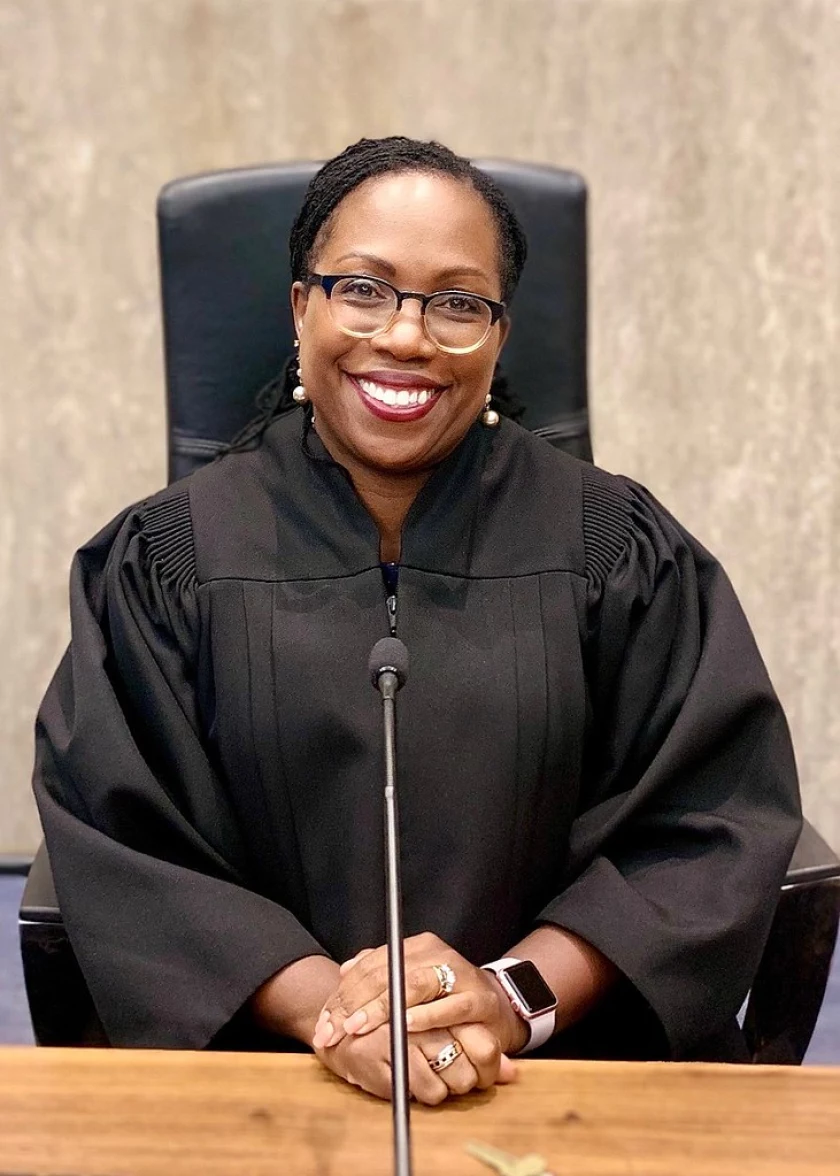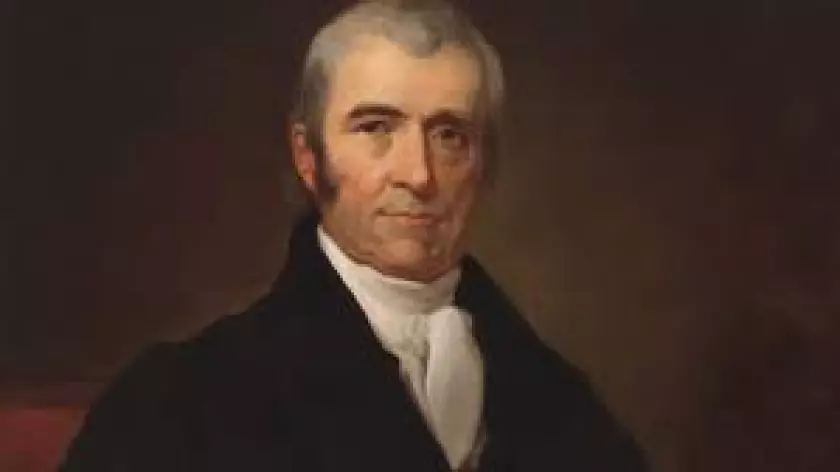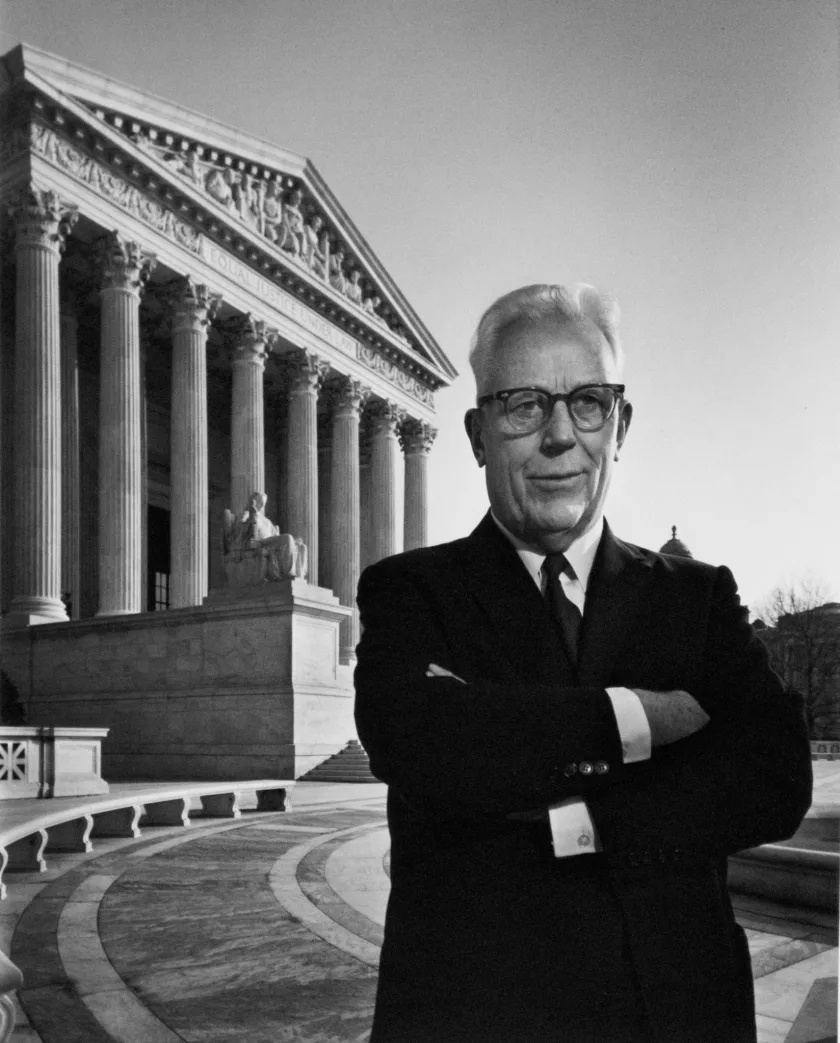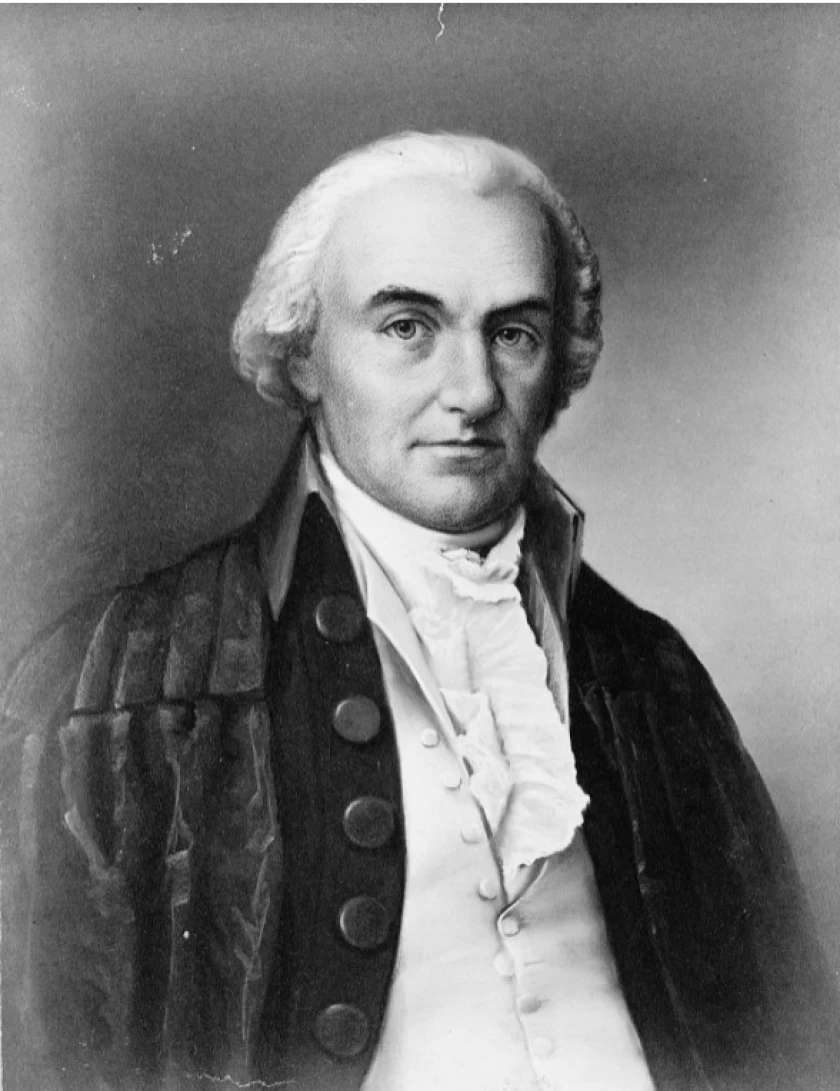The Supreme Court has been more than usually visible in the last half-dozen years. The American judiciary has been drawn into the intense partisanship of this era in American political history. Everyone understands that the stakes are high, both because the court is addressing fundamental issues in American life, and life tenure in a time of great individual longevity makes every Supreme Court justice one of the most powerful figures in the United States.

Ketanji Brown Jackson on the bench of the U.S. District Court for the District of Columbia, 2019. On February 25, 2022, she became the first Black woman to be nominated by an American President to serve as a Justice of the Supreme Court of the United States. flickr/bswise
As we move toward the confirmation hearings of Ketanji Brown Jackson and debate the place of the judiciary in American life, it helps to examine three persistent myths about the Supreme Court: that the number of justices is set by the Constitution; that the Constitution grants the Supreme Court the right of judicial review; and that justices once confirmed often veer from the political views of those who nominated them.
Myth One: The Number of Justices Is Set by the Constitution.
The Constitution is silent on this question. In Article III, Section I, the Constitution merely states that “The judicial Power of the United States, shall be vested in one supreme Court, and in such inferior Courts as the Congress may from time to time ordain and establish.” It was left to the legislative branch to work out the details.
Much of the actual infrastructure of the U.S. court system was established by the Judiciary Act of 1789, largely written by Connecticut Sen. Oliver Ellsworth. In that landmark piece of legislation, the first Congress created a three-tiered federal judiciary: district courts, circuit courts, and a “Supreme Court.” It also created the position of attorney general of the United States.
The Supreme Court would consist of a chief justice and five associate justices. Supreme Court justices would be required to “ride circuit” — that is, travel into the nation’s heartland to preside over cases that have not risen to the attention of the Supreme Court. This provision of the 1789 Judiciary Act was intended to limit the costs of the judiciary and to keep justices in touch with the American people. Riding circuit was regarded by most justices as an unpleasant burden, especially early on when travel was difficult, roads rudimentary, bridges frequently nonexistent. Circuit riding was not finally retired altogether until 1911, though it had been greatly curtailed by the Judiciary Act of 1891.
The number of justices on the Supreme Court has gone up and down over time. Attempts to raise or shrink the number of justices have all been based on political calculus rather than administrative efficiency. When Thomas Jefferson was elected to the presidency in 1800, the outgoing Federalist Congress quickly reduced the number of justices from six to five for no other purpose than to prevent Jefferson from naming his own justice once one of the sitting justices died or resigned. In 1802, a Jefferson-friendly Congress restored the number to six on his behalf, and in 1807, to seven, to give him yet another opportunity to name a friendly justice.
In 1837 the number was increased to nine to permit President Jackson to secure his legacy by naming two more justices. And during the Civil War the number was increased to 10 to consolidate union power on the court. In 1866, during the administration of Andrew Johnson (an accidental president) the number was reduced to seven to prevent him from naming people of his political stamp to the court. Finally, on April 10, 1869, Congress returned the number to nine, where it has remained, as if settled once and for all, for 153 years.
Nevertheless, the idea of increasing the number of justices for political gain resurfaces from time to time when the party in power feels that the Supreme Court is at odds with its policy agenda or judicial philosophy. The most notorious case of “court packing” occurred during the administration of Franklin Delano Roosevelt (1933-45). Frustrated by the Supreme Court’s invalidation of several key pieces of New Deal legislation, FDR introduced legislation in 1937 to expand the number of justices to 13 or perhaps even as high as 15. This, he thought, would give his New Deal measures a greater chance of being upheld by the court. The bill suffered a humiliating defeat in Congress — a Congress dominated by FDR’s fellow Democrats.
Fortunately for FDR, his long tenure as president and the actuarial tables worked to his advantage. Before he died on April 12, 1945, just a few weeks into his fourth term, he had appointed eight members of the Supreme Court. He was thus able to “pack” the court within its traditional structure, without having to increase the number of justices.
FDR’s failure to convince his own party at a time of national and international emergency to pack the court reminds us that the American people are historically conservative about changes to their system. Recent suggestions by Democrats, occasionally including President Joe Biden, to add additional justices to the Supreme Court to reset the ideological balance have been met with loud and angry condemnation, not just by Republicans, but by a larger nonpartisan portion of the U.S. electorate.
Myth Two: The Constitution Grants the Court the Right to Engage in Judicial Review.
The Constitution says nothing about judicial review. This is the practice of the Supreme Court striking down congressional legislation when it is perceived to veer from the clear intentions of the Constitution. Because the Constitution is fundamental law, all subsequent acts of congressional legislation must defer to the dictates of the Constitution. A law that does not conform is “unconstitutional.”
Judicial review is a constitutional norm that has roots in British common law (before the United States was born), but it dates in the U.S. to the landmark decision in a case known as Marbury v. Madison, decided by the John Marshall court in 1803. Every law student encounters Marbury v. Madison early in their first year. The particulars of the case are not important for this discussion. Writing for the court, Chief Justice John Marshall struck down a provision of the 1789 Judiciary Act as counter to the Article III provisions of the Constitution and declared, without any qualifying language, “It is emphatically the province and duty of the judicial department to say what the law is.” Marshall said, with equal emphasis, “that a law repugnant to the constitution is void, and that courts, as well as other departments, are bound by that instrument.” Marbury v. Madison was the first use of judicial review in American constitutional history. It wasn’t until the infamous Dred Scott decision in 1857 that the Supreme Court voided another federal statute. Since then, the Supreme Court has declared hundreds of laws in whole or in part unconstitutional.

John Marshall served as Chief Justice for thirty-four years and presided over an era of cases that helped define the judicial system of the United States as well as the nature of the federal government. mountvernon.org
The doctrine and practice of judicial review are by now so deeply rooted in the American judicial system that it is nearly universally acknowledged as having full constitutional status, except by a few constitutional literalists. But you can read the 4,543-word Constitution in vain to find the enabling language.
Most judicial thinkers argue that judicial review is not only implied but necessitated by the existence of a formal national constitution. Examples: The Constitution forbids ex post facto laws in the United States. If Congress passed a law today forbidding sitting presidents from owning a hotel, and then the judiciary indicted former President Trump for having owned the Trump International Hotel on Pennsylvania Avenue in the Old Post Office Building, that would clearly be an unconstitutional ex post facto law because it violated Article I, Section IX of the Constitution.
The sensible legal principle is that we must not be punished for breaking laws that didn’t exist when we so acted. If the judicial branch of the national government were not able to declare that law unconstitutional, how would that provision of the Constitution be enforced and upheld? If Congress passed a law tomorrow saying that anyone who drove faster than 55 mph in 1979 should be fined, that would be an unconstitutional ex post facto law. In short, if the federal courts could not strike down that or other unconstitutional laws, how would the Constitution maintain its supremacy? If a panicky Congress attempted to censor free speech in a time of war, the Supreme Court would be the last bulwark of the First Amendment.
Myth Three: Thanks to Life Tenure, Justices Often Veer from the Expectations of the Presidents Who Appointed Them
Most justices reliably vote the way their presidents intend, at least in the first years of their tenure on the Supreme Court. One recent study concludes that fully 75 percent of Supreme Court justices conform to the political and legal expectations of the president or party that appointed them. Even so, once appointed by the president and confirmed by the Senate, a justice of the Supreme Court serves for life on good behavior.
In an institution with no term limits, no procedure for recall, no periodic votes of confidence or no confidence (as in the Missouri plan for state and local judges), and not a single successful impeachment of a Supreme Court justice in American history, a justice — once confirmed — can vote cases in any way she or he wishes and exercise true judicial independence — for life! Although the president may be appalled and the American citizenry outraged, there is no effective remedy against a justice who thwarts expectations. And though this is a source of frustration among presidents, parties, and often the public, judicial independence is one of the most important measures of success of the judicial branch of government. The Founding Fathers wanted an independent judiciary, largely immune from the vagaries of the routine political process.
In a joint article in Political Research Quarterly, Jeffrey Segal, Richard Timpone and Robert Howard conclude that “Presidents themselves are notorious complainers when it comes to the judicial behavior of their Supreme Court appointees.” President Harry S. Truman said that his appointment of Tom Clark was “my biggest mistake.”

Earl Warren served as Chief Justice of the United States Supreme Court from 1953-1969, and the groundbreaking decisions of the Warren Court included banning segregation in public schools. karsh.org
President Eisenhower is reputed to have said that he made two mistakes during his presidency and both of them were on the Supreme Court. One was Chief Justice Earl Warren, who led the court in a progressive direction for the next 16 years and brought the Constitution into harmony with the emerging social standards of American life. The other was one of the court’s most impressive liberals, William Brennan, who served from 1956-1990, at 33 years the seventh-longest tenure of any Supreme Court justice.
With his characteristic strenuosity, President Theodore Roosevelt lamented his appointment of Oliver Wendell Holmes Jr. to the court. After Holmes voted in 1904 against the Roosevelt administration’s anti-trust suit against the Northern Securities (Railroad) Company, TR famously said, “I could carve out of a banana a judge with more backbone.”
President Trump was apoplectic when judges and justices, including some he appointed, failed to side with him in cases that stemmed from his energetic and controversial tenure. When his executive order banning travel by Muslims to the United States was rejected by Judge James Robart (who had been confirmed in 1993 for a seat on the U.S. District Court in the state of Washington by a 99-0 vote in the Senate), the president of the United States called him “a so-called judge” and said, “I have instructed Homeland Security to check people coming into our country VERY CAREFULLY. The courts are making the job very difficult!”
Segal, Timpone and Howard conclude: “Supreme Court justices vote relatively concordantly with their appointing president in the early years of their appointment to the bench. However, this relationship declines over time.” At the Supreme Court veers toward the right thanks to the three appointments of President Trump, Chief Justice John Roberts is likely to further emerge as a justice who does not always conform to the expectations of the party and the president who put him on the Supreme Court.
Republished with permission from Governing Magazine, by Clay S. Jenkinson

Governing
Governing: The Future of States and Localities takes on the question of what state and local government looks like in a world of rapidly advancing technology. Governing is a resource for elected and appointed officials and other public leaders who are looking for smart insights and a forum to better understand and manage through this era of change.

